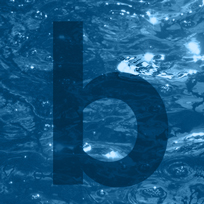While brainstorming for my last blog, I came across a few interesting articles about Dove and their on-going “Real Beauty” Campaign.\n\nThey came up with a clever guerilla marketing scheme (see full here) to target not their audience, but those who have a direct influence on their audience: the creative world that dictates what kind of images their key demographic is exposed to. Dove created a program disguised as a free Photoshop filter to enhance/beautify photos that, when applied, reverted the photo back to its original pre-edited state. Coupled with a PSA-like message, Dove urged art directors and designers not to edit their photos but to instead support natural beauty. Not too long after, the company launched another campaign, this time in the form of a YouTube video where women visually confronted the contrasts between how they saw themselves and how others saw them through a series of sketches. Many a shared link, retweet, reblog, and even parody later (see here), I think it’s safe to say Dove has succeeded in creating quite an online buzz recently.\n\nThis is clever on a few different levels. If taken at face value, Dove is not a cosmetic company but a movement for change, a rebel, a revolutionary. They are on the consumer’s side, fiercely fighting a war against the exclusive and superficial injustice of advertising. And that is not to say that advocating for real beauty is not an admirable endeavor. But what is Dove really doing? Something bigger than selling a shampoo or preaching about natural beauty. Dove is creating conversations. Because whether you agree with their tactics or not doesn’t matter: if you have an opinion on Dove, they’ve already done their job. Every shared link, every retweet, every Facebook like or comment, even spoof of their campaign, increases awareness of the Dove brand and further cements it into their audience’s minds. Yes, Dove is striving to change a flawed system, but it is also that same superficial system that they as a company directly profit from. Remember, they are advocating for real beauty with a capital R, a trademark product of Dove itself.\n\nDove remains relevant by staying on the tip of consumers’ tongues, and profitable by staying smart. Good intentions aside, at the end of the day Dove is selling a product, and making a profit. Personally I like Dove products, they do what they are supposed to (lather, rinse, repeat) and any support of real beauty/real women is fine by me. But what I really appreciate is their strategy, one that demonstrates how incredibly tuned in they are to their audience. They sell ideas, campaigns, and causes, because those are what we want to believe we are buying. They sell us an experience, where we feel good about purchasing their products, for what they mean, not what they do. By making a business of feeling, Dove has attached a sense of righteousness to buying their goods; one feels justified buying from Dove because it is well-intended and for a greater cause. It is through this pairing of product and cause that the Dove brand has created a special place on the shelves of their consumer’s minds and hearts, and that is quite clever indeed.
 Lessons in Daring
Lessons in Daring  More than Sauce: Branding Diversity
More than Sauce: Branding Diversity  Talk to Me: Reading Out Loud as Part of the Writing Process
Talk to Me: Reading Out Loud as Part of the Writing Process
[…] Marketing Campaign: Dove Real Beauty In my book the most memorable campaign of 2013 was the Dove ad where women were asked to describe themselves to a forensic sketch artist then strangers were asked […]